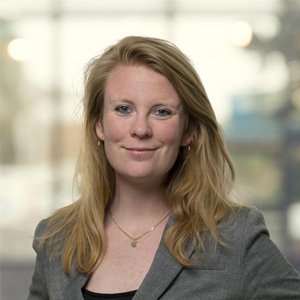Bridging the gap between academia and the real world
Meet Saskia Lensink, consultant on AI at TNO, an independent research organisation in the Netherlands that drives innovation through its strong ties with academia and industry
Saskia, tell us about TNO’s role in the project.
– TNO is an independent research organisation that drives innovation, with a strong network in both academia and industry. Our role is to bridge the gap between academia and the real world by actively engaging in use cases applying TrustLLM models, and helping shape innovative solutions to enhance the factualness of large language models (LLMs). On top of that, we aim to publish our research results in international scientific papers and conferences.
We are involved in the Dutch coordination of efforts related to the Alliance for Language Technologies EDIC (ALT-EDIC), which is coordinated by France and brings together nineteen Member States. ALT-EDIC aims to develop a common European infrastructure in Language Technologies, focusing on LLMs to improve European competitiveness, increase the availability of European language data, and uphold Europe’s linguistic diversity and cultural richness. Also, we collaborate with several Dutch industrial and academic partners to develop GPT-NL, a Dutch LLM, which can greatly benefit from the ecosystem and insights gained in this project, and vice versa.
Which challenges do you find most interesting to solve through the project?
There are many challenges, but these are the ones that stand out for me:
The data – how does it sit with current legislation; how do we address privacy and copyright issues? We strive to be as transparent and trustworthy as possible, but at the same time want to innovate as well and use lots of scraped data, and that appears to be at odds with each other. This is a very interesting and complicated issue.
Another challenge is the adoption of a future TrustLLM model – will we manage to develop a model that is a valid alternative to non-European LLMs, at least in a specific domain or perhaps multiple? And how can we increase the chances of that happening? The use cases and applications will hopefully help us there, but a lot needs to be done.
What are you most looking forward to achieving in the coming months?
In the coming months, I am most looking forward to seeing how well the first TrustLLM model will fit into our use case contexts such as BookBot or our MedicalBot. We hope to find a good way to translate that back into something that the rest of the consortium can keep on building on top of. This will be a significant milestone, as it will demonstrate the practical applicability of our research and its potential to drive innovation in real-world settings.
What has been the most inspiring experience during your work on the project so far?
The kick-off! I loved seeing some of the team in real life, hear all the Germanic languages during fika (Swedish for coffee break) and share our first ideas and plans.

Saskia Lensink, consultant on AI, TNO
